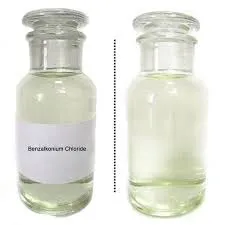Chemical Methods for Water Treatment Using Coagulation and Flocculation Techniques
Chemical Coagulation and Flocculation in Water Treatment
Water is an essential resource for all forms of life on Earth, and its quality is critical for human health, agriculture, and industrial processes. As populations grow and urban areas expand, the demand for clean water increases, necessitating the development and implementation of effective water treatment technologies. Among these technologies, chemical coagulation and flocculation play vital roles in removing impurities and ensuring safe water supply.
Understanding Coagulation and Flocculation
Coagulation and flocculation are two interrelated processes used in the treatment of water to remove suspended particles and colloidal substances. Coagulation involves the addition of chemicals, known as coagulants, to water, which helps destabilize and neutralize the electric charges that keep particles suspended. Common coagulants include aluminum sulfate (alum), ferric sulfate, and polyaluminum chloride. Once these chemicals are added, small particles, which may include silt, clay, organic matter, and microorganisms, begin to clump together, facilitating their removal.
Following coagulation, the process of flocculation takes place. This involves gentle mixing of the water to promote the growth of larger aggregates called flocs. These flocs are formed when smaller coagulated particles collide and adhere to each other, creating larger masses that can be easily removed from the water. Flocculation often involves the use of polymers or additional chemicals to enhance floc formation and increase the settling rate.
Importance in Water Treatment
The significance of chemical coagulation and flocculation in water treatment cannot be overstated. Firstly, these processes improve the clarity of water by removing suspended solids, which can harbor pathogens and other harmful substances. By effectively cleaning the water, these methods help reduce the risk of waterborne diseases, making it safer for consumption.
Additionally, coagulation and flocculation are crucial in the treatment of surface water from rivers, lakes, and reservoirs, which can have varying levels of turbidity and organic content. The processes also aid in the removal of color, odors, and taste that may be associated with organic materials. This not only enhances water aesthetics but also its palatability.
chemical coagulation and flocculation water treatment

Environmental Considerations
Despite the effectiveness of chemical coagulation and flocculation, considerations regarding chemical use and disposal have prompted ongoing research into more sustainable methods. The addition of coagulants can introduce residual chemicals into the treated water, necessitating careful regulation and disposal practices. This concern has led to an exploration of alternative coagulants derived from natural substances, such as plant-based materials, which may have less environmental impact.
Furthermore, the sludge generated from these processes, composed of the removed particles and excess coagulants, poses disposal challenges. Waste management strategies, including recycling and beneficial reuse of sludge as fertilizers or soil amendments, are being developed to minimize environmental footprints.
Future Trends and Innovations
The ongoing quest for improving water treatment processes has led to innovations in the field of chemical coagulation and flocculation. The integration of advanced technologies like microsystems and artificial intelligence is gradually becoming a reality. By optimizing coagulant dosage and monitoring water quality in real-time, treatment plants can enhance efficiency and reduce chemical use.
Innovative materials, such as bio-inspired flocculants, are also being researched to improve floc formation while minimizing chemical additives. These advancements signify a crucial move towards more sustainable water treatment practices, addressing the challenges posed by escalating water demands.
Conclusion
Chemical coagulation and flocculation remain essential techniques in the treatment of water, safeguarding public health and ensuring access to clean water. As the industry evolves, the incorporation of sustainable practices and technologies will be instrumental in meeting future water quality standards. The continued research and development in this field will contribute to not only safer drinking water but also a more resilient and sustainable water management system worldwide.
-
Pbtc Scale InhibitorPBTC: A Scale Protector for Industrial Water TreatmentNewsAug.05,2025
-
Organic Phosphonate: An Efficient Defender in the Field of Scale InhibitionNewsAug.05,2025
-
Hydrolyzed Polymaleic Anhydride: Green Pioneer in Scale Inhibition FieldNewsAug.05,2025
-
PAPEMP Polyamino Polyether Methylene Phosphonic Acid For SaleNewsAug.05,2025
-
Flocculant Water Treatment: A Pioneer in Purification in the Field of Water TreatmentNewsAug.05,2025
-
Benzyl Isothiazolinone: An Efficient and Broad-Spectrum Antibacterial Protective GuardNewsAug.05,2025





